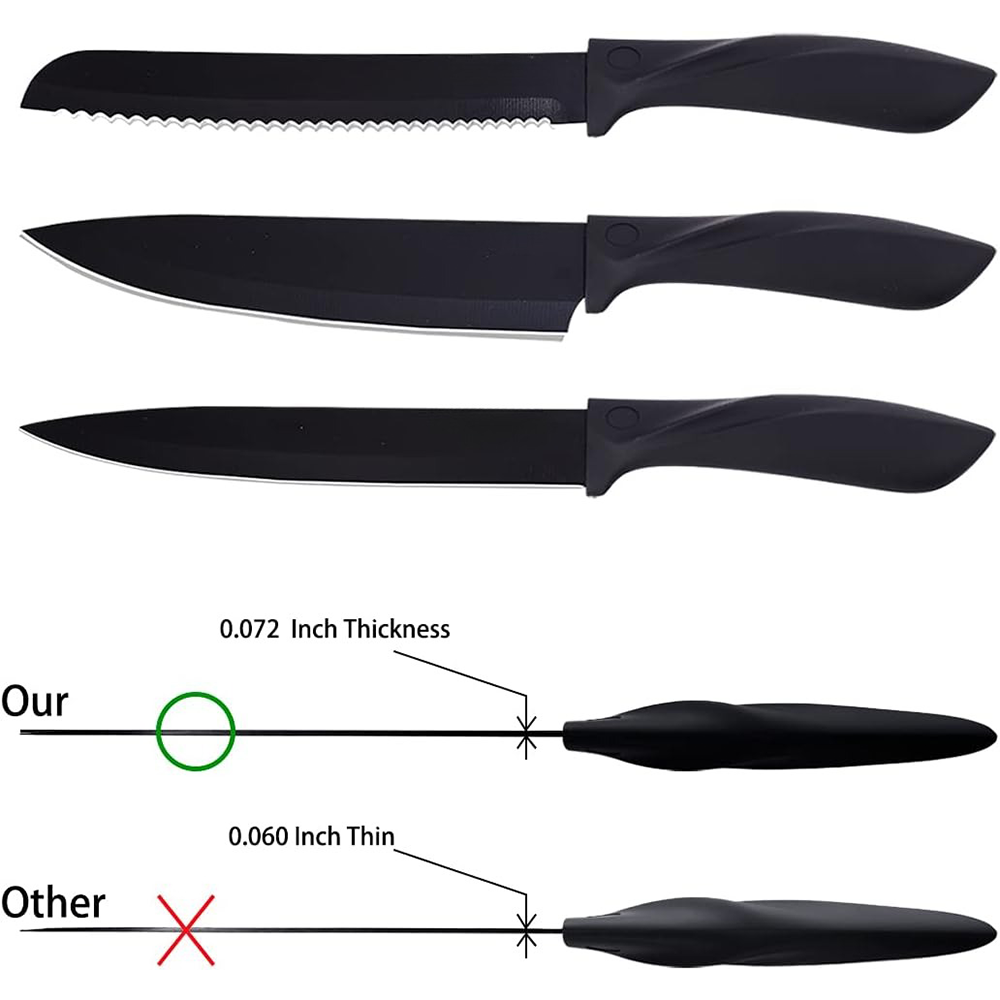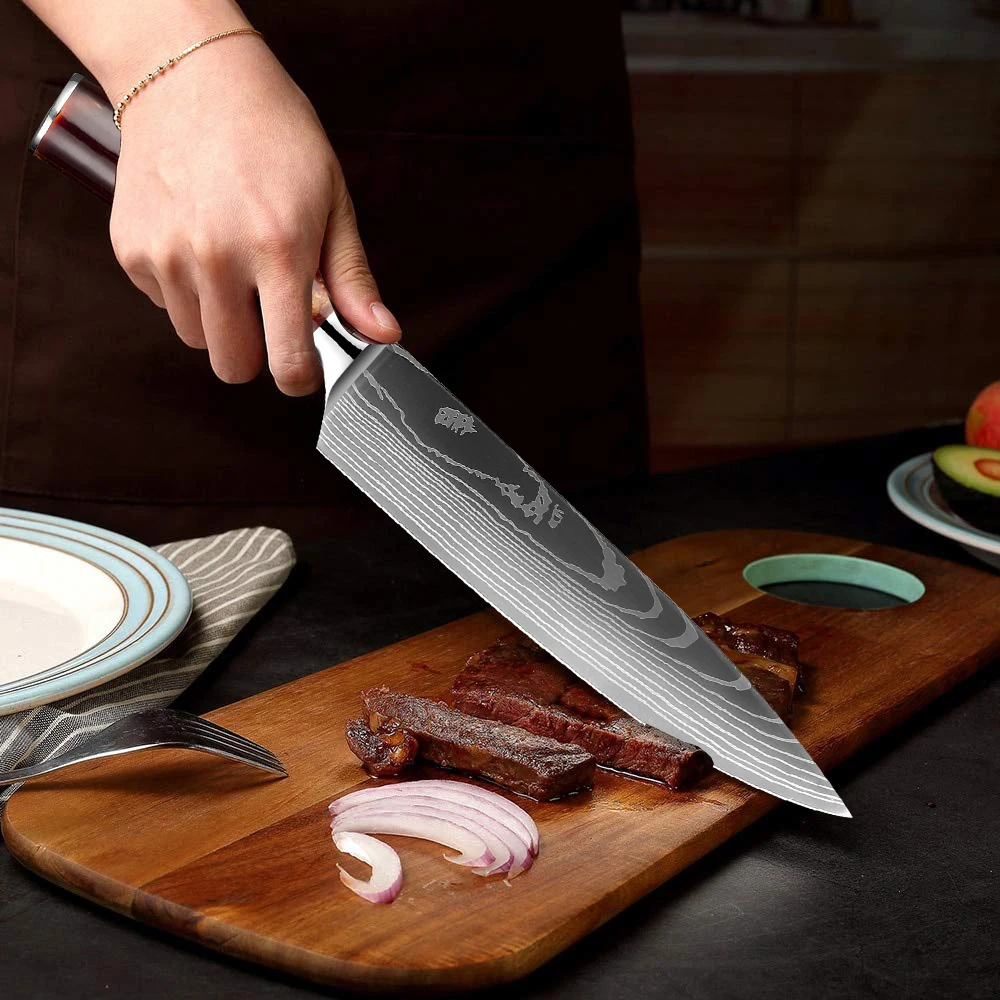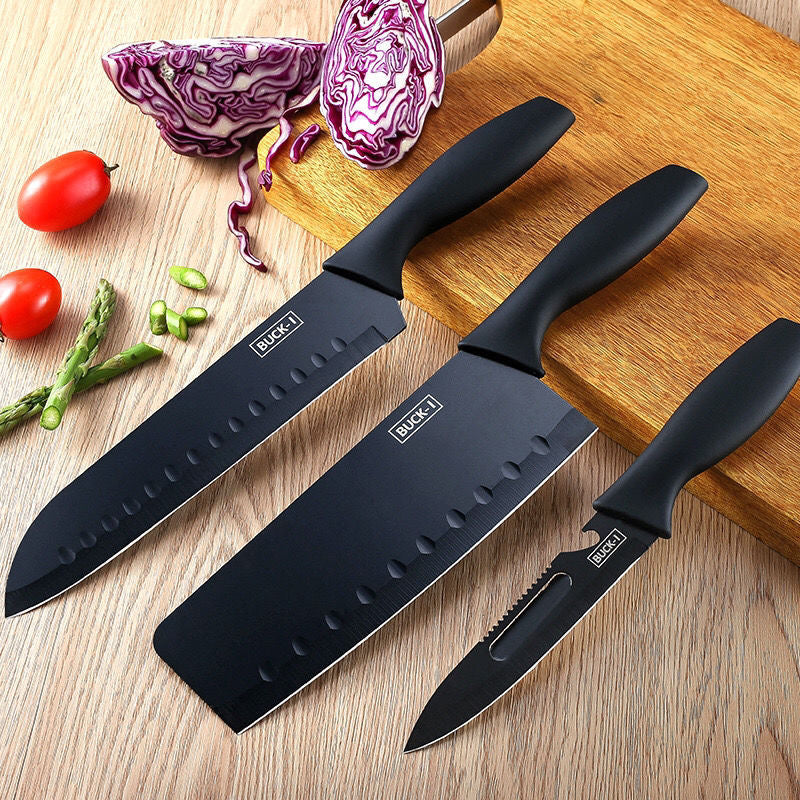Essential Knife Storage Solutions
Ensuring kitchen knife safety begins with proper storage. Here are the best methods to store knives.
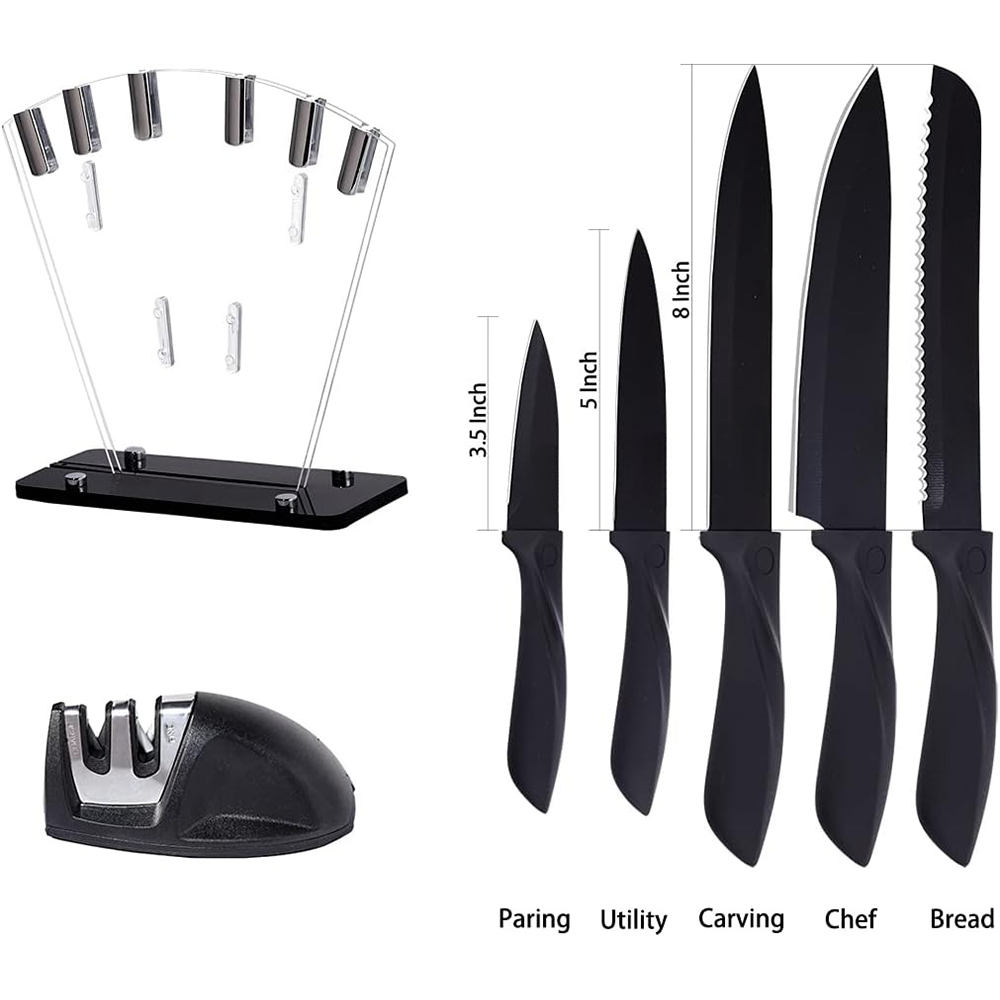
Options for Safe Knife Keeping
Knife storage must prevent accidents and protect blades. Options include knife blocks, magnetic strips, in-drawer organizers, and knife rolls. Choose based on kitchen layout and personal preference.
Placing knives in a block keeps edges sharp and fingers safe. Blocks fit on countertops for easy access. Magnetic strips display knives clearly, preventing mishandling. For drawers, organizers keep each knife separate and secure. Rolls are great for chefs who travel with their knives.
Benefits of Using Knife Blocks and Magnetic Strips
Blocks and strips have advantages for kitchen knife safety. Both prevent blade damage and reduce injury risks.
Knife blocks protect edges from wear. They’re stable and keep sharp points directed away from hands. Magnetic strips offer visibility, so you select the right knife safely. Their placement also saves precious counter space.
To summarize, proper knife storage is a fundamental step in knife safety. It keeps knives in good condition and reduces accidents. Whether you opt for a knife block, magnetic strip, drawer organizer, or knife roll, the key is to choose a solution that suits your kitchen’s needs while enhancing safety.
Selecting the Right Knife for Every Task
Selecting the right knife isn’t just about precision, it’s also critical for kitchen knife safety. Each type of knife is engineered for specific tasks, and using the incorrect one can lead to accidents and injuries. Below, we’ll walk through the various factors to consider when choosing the correct knife for your kitchen activities.
Understanding Different Knife Types
Before diving into a cutting task, know the knives available to you. Each knife type, from chef’s knives to paring knives, is designed for particular functions. Chef’s knives are versatile for chopping and dicing; serrated knives excel at cutting bread without squashing; fillet knives are ideal for delicate fish cuts. Knowing the purpose of each can prevent mishaps.
Importance of Knife Size and Shape
Size and shape matter greatly in kitchen knife safety. A large knife can be unwieldy for small hands or delicate tasks; a small knife might struggle with larger foods. The wrong knife can slip or require excessive force, both risk factors for injury. Opt for a knife that feels balanced, fits the task, and sits comfortably in your hand. This will promote control and accuracy while minimizing danger.
Proper Knife Handling Techniques
Ensuring kitchen knife safety encompasses proper handling techniques. Below, we explore simple steps to safely carry, pass, and cut using kitchen knives, reducing the risk of accidents.
Steps to Safely Carry and Pass Knives
Always hold the knife firmly by the handle with the blade pointing downwards. When passing a knife, place it down on a stable surface and let the other person pick it up by the handle. Never hand a knife directly to someone, as this increases the risk of injury.
Cutting Techniques to Prevent Accidents
Use a stable cutting board and the right type of knife for the task. Always cut away from your body, and keep your fingers tucked in (‘the claw’ method). This technique keeps your fingers away from the blade and provides more stability while cutting. Ensure your cutting movements are controlled and deliberate to avoid slips and injuries.
Knife Maintenance: Sharpening and Care
Proper knife maintenance is crucial for kitchen safety and efficiency. Keeping your knives sharp reduces the risk of accidents caused by applying excessive force.
Importance of Keeping Knives Sharp
A sharp knife is safer and more efficient than a dull one. It cuts with less force, reducing the chance of slipping.
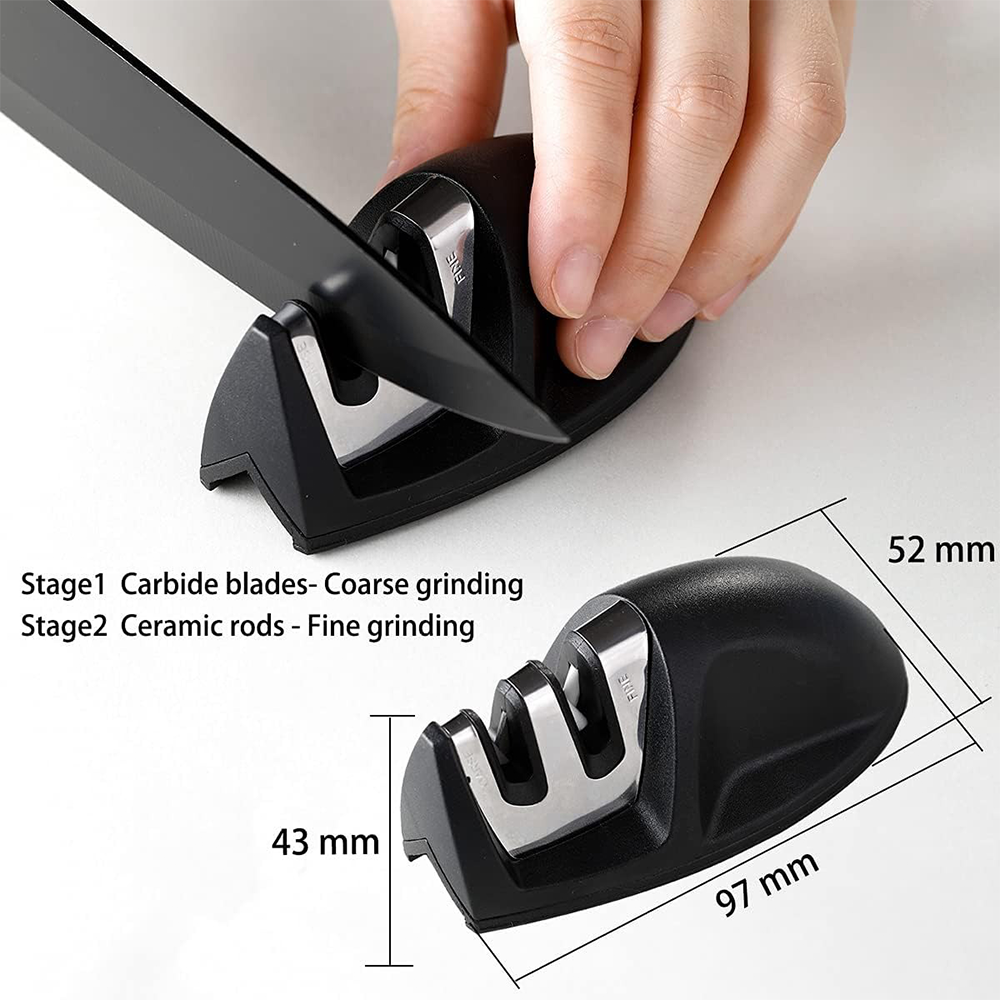
Techniques and Tools for Knife Sharpening
Use a sharpening stone or an electric knife sharpener to maintain your knives. Ensure you sharpen at the correct angle, typically between 15 to 20 degrees.
Implementing Safe Knife Usage Protocols
Training Staff on Knife Safety
To foster a safe kitchen, start by training staff on knife safety protocols. Show videos or perform demonstrations to illustrate correct handling and usage. Test employees on their knowledge periodically. Keep reminders posted in the kitchen area.
Regularly discuss knife safety during team meetings. Make it clear that safe knife practices are a priority. Encourage reporting and analyzing near-misses to improve safety.
Creating a Safety-First Kitchen Environment
Creating a safety-first kitchen requires both good practices and a supportive culture. Ensure kitchen layouts minimize the risk of bumping into others while holding knives.
Provide well-maintained equipment, including cut-resistant gloves and proper storage solutions. Encourage a culture where staff feel comfortable discussing safety concerns. Recognize and reward safe behavior.
Ultimately, knife safety protocols protect staff and maintain a professional workspace. A commitment to these practices reduces accidents and enhances overall kitchen efficiency.
Cleaning and Sanitizing Knives
Steps to Clean Knives Correctly
To maintain kitchen knife safety and hygiene, follow these steps to clean knives properly:
- Immediate Washing: Clean knives right after use to avoid food residue hardening.
- By Hand: Hand wash your knives instead of using a dishwasher to prevent damage.
- Blade Care: Hold the knife by the handle and gently wash the blade, edge facing away.
- Gentle Scrubbing: Scrub the knife slowly and thoughtfully, not to damage the blade.
- Short Soaks: Soak knives only for a few minutes if food is stuck.
- Dry Thoroughly: After rinsing, dry the knife immediately to prevent rust.
- Safe Storage: Store the knife properly once it’s clean and dry.
Avoid using abrasive materials that could scratch the knife. Using a soft sponge or cloth works best.
Preventing Cross-Contamination
Cross-contamination is a serious concern in kitchens. To prevent it, here are simple steps:
- Separate Use: Have different knives for raw meats and produce.
- Immediate Cleaning: After using a knife, wash it before cutting something else.
- Regular Sanitizing: Use appropriate sanitizers on the knife to kill lingering germs.
By using these methods, you maintain cleanliness and support kitchen knife safety.
Avoiding Common Knife Safety Mistakes
Handling Knives During Busy Kitchen Hours
During busy hours, kitchens can become hectic and risky, especially with knife usage. Here are practical tips to enhance kitchen knife safety during these times:
- Communicate Clearly: Always use clear and loud verbal indicators such as “sharp behind” when moving with knives.
- Avoid Rushing: Even in rush, ensure your knife handling remains calm and controlled to prevent accidents.
- Organize Work Stations: Keep each station clear of unnecessary clutter to avoid mishaps.
Following these tips helps in maintaining a safe kitchen environment even during peak hours.
Practices to Avoid with Kitchen Knives
Certain practices increase the risk of accidents and should be strictly avoided:
- Avoid Distractions: Never use a knife while distracted. Focus on the task at hand.
- Never Catch a Falling Knife: If a knife begins to fall, step back and let it land safely before picking it up.
- Do Not Leave Knives in the Sink: Knives left in the sink can be hidden under suds and dishes, leading to accidental cuts.
By steering clear of these dangerous habits, you can significantly enhance kitchen knife safety and minimize risks in the kitchen space.
Conclusion: A Safe Kitchen is a Happy Kitchen
Practicing kitchen knife safety is vital for a positive cooking experience. Understanding the risks involved with knives, choosing the right tools, using proper techniques, and maintaining your knives can greatly reduce the likelihood of accidents. Make safety a priority in your kitchen by creating a safe environment and teaching these practices to others, including children.
By following the outlined tips and strategies, you can enjoy your time in the kitchen confidently. Whether you are preparing simple meals or experimenting with gourmet recipes, having a clear understanding of knife safety enhances your cooking skills and keeps you and those around you safe. Remember, a safe kitchen is a happy kitchen, where everyone can enjoy the joy of cooking together.
